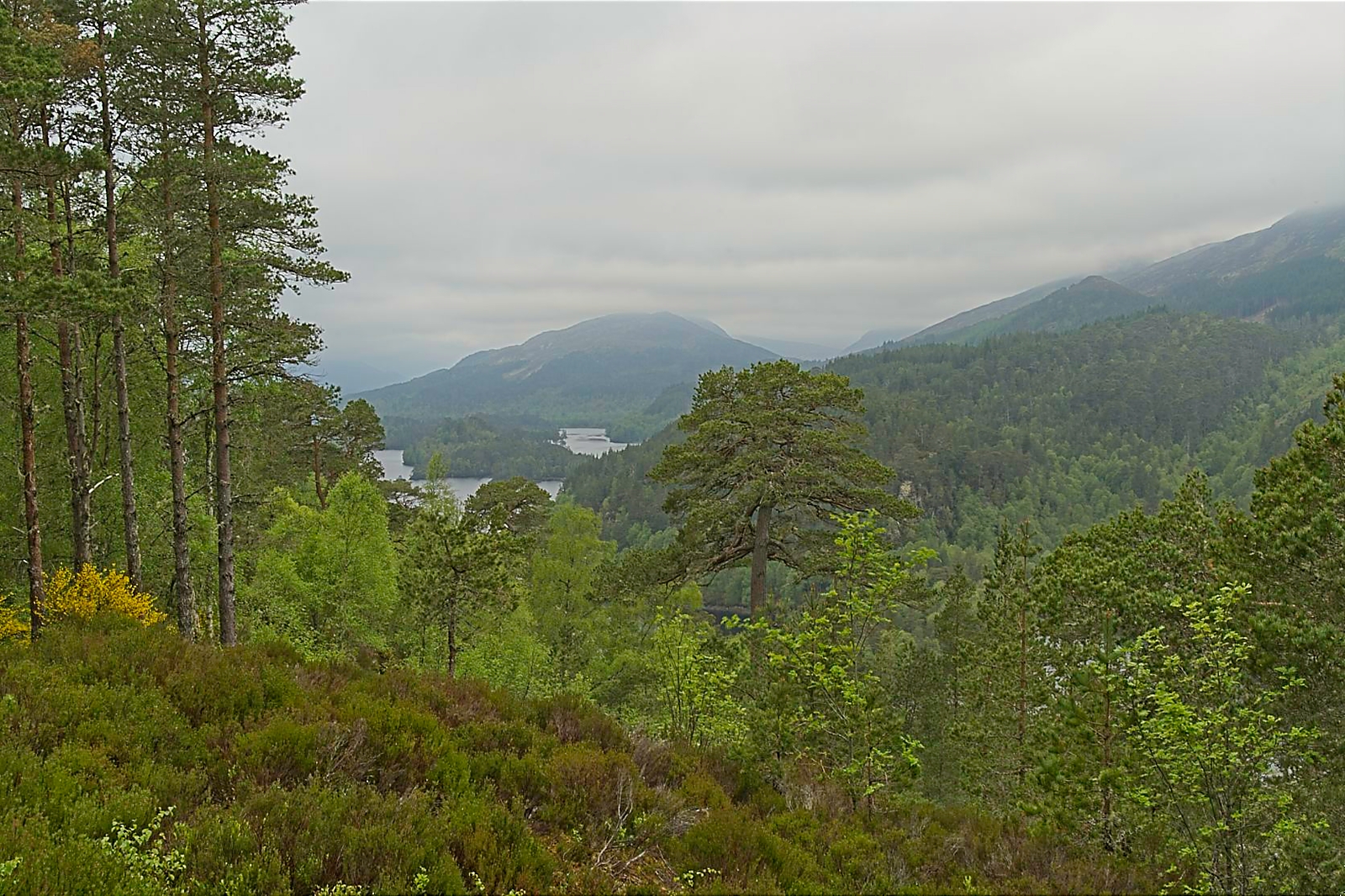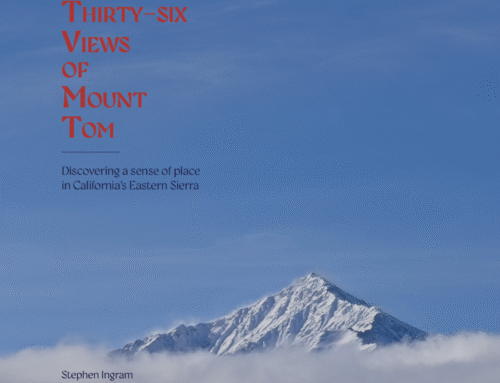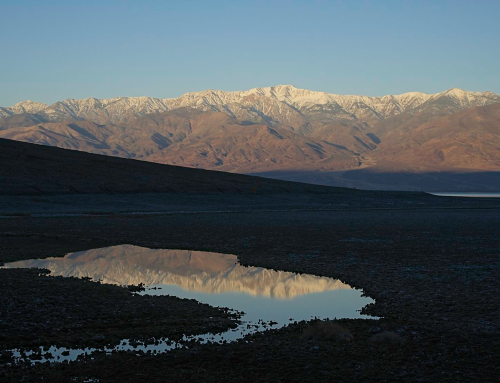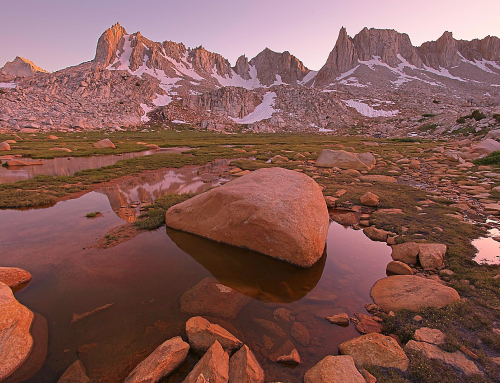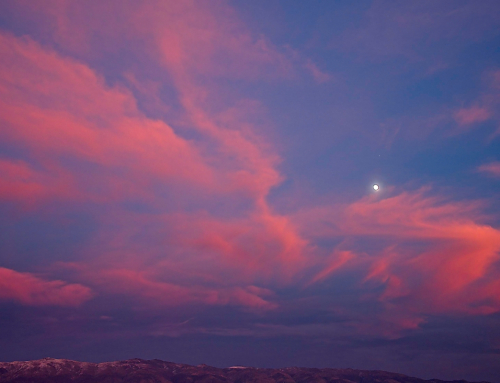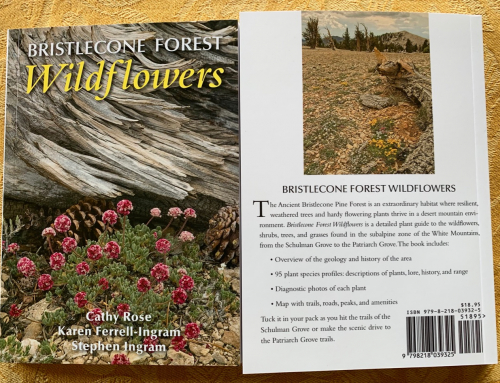We were drawn to Great Britain again for many reasons: planning to explore the remnants of Scotland’s Caledonian Forest, joining the Cloud Appreciation Society’s gathering on the Orkney Islands, and visiting our niece’s growing family in Seaham, England. I’ve tried to distill our Scotland experiences into the smooth, balanced, and well-aged blogpost that my astute readers have come to expect, but for brevity, I’ve inserted (mostly Wikipedia) links in bold that you can go to for more information.
Our British Airways flight departure from LAX was delayed an hour, but that created fortuitous timing for photographing the shadow of Mount Tom extending over the Tungsten Hills as we flew at 32,000 feet just west of our home ground. I think of this as the 37th View of Mt. Tom.
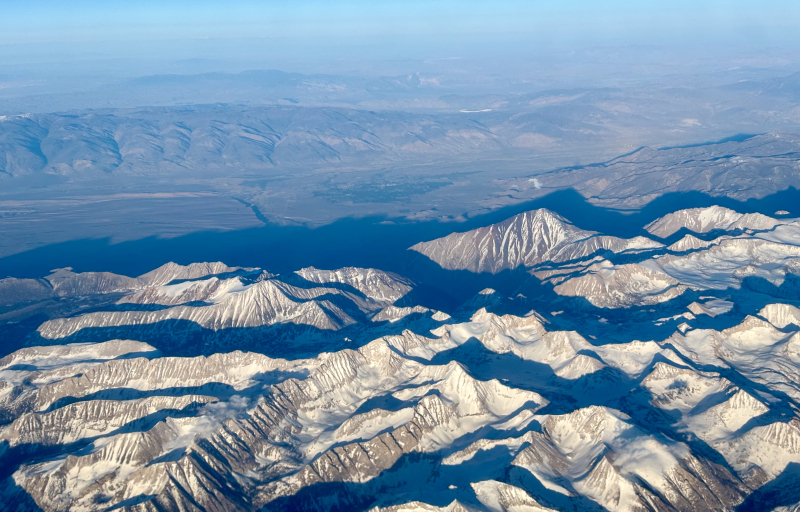
Sierra Nevada with Mt. Tom’s shadow stretching over the Tungsten Hills, southwest of Bishop.
After landing in Inverness, finding our rented Renault hybrid, and being reminded to “Keep Left!” we headed south on the A9 to the Strathspey area of the Spey Valley and the Abernethy Forest Reserve, a Royal Society for the Protection of Birds (RSBP) site. We spotted a soaring golden eagle and heard the evocative call of a distant common cuckoo on our way up a 2660 foot “mountain” in the Glenmore Forest Park. Here the 4000-foot Cairngorms Massif rises to the south and east. Treeline in this part of Scotland is around 1800 feet, with a moorland of heather and low alpine plants above that.
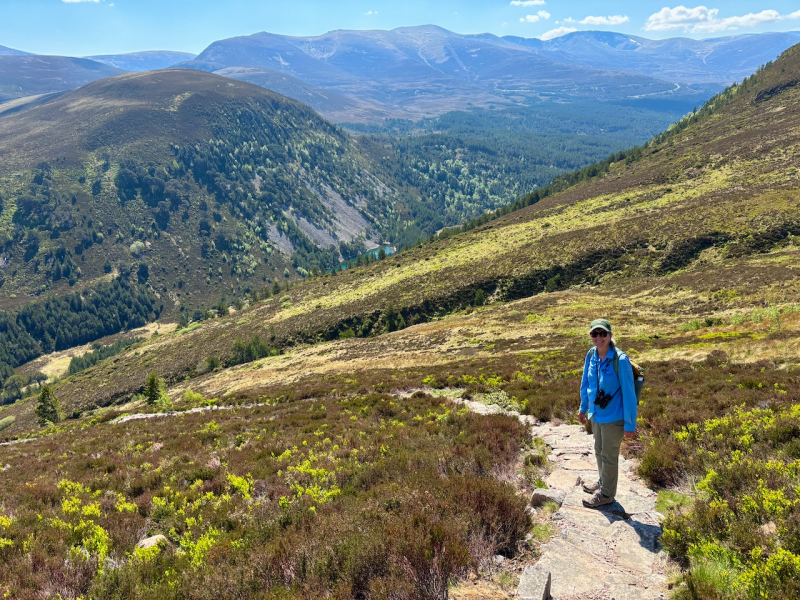
The trail down from Meall a’ Bhuachaille with Cairngorm Mountains in background, Glenmore Forest Park.

A family of Graylag geese on Loch Mallichie, Abernethy Forest Reserve.
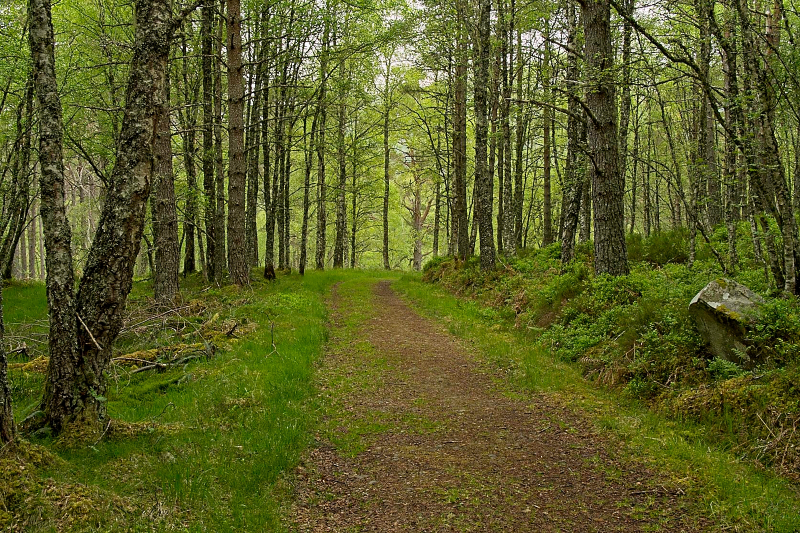
Forest of pines and birches along Dog Loop Trail, Glen Affric
After leaving the wonderful Rowan Tree Hotel outside Aviemore, we spent the next few days exploring Glen Affric National Nature Reserve, which many Scots consider some of the most beautiful forested landscapes in their country. Temperate Caledonian Forest recolonized much of northern Scotland after the Last Glacial Period around 10,000 years ago. Today there is only about 1% of this old-growth forest remaining, but there is selective logging here and many parts of northern Scotland are covered with pine plantations. We got out early each day and were lucky to catch a brief glimpse of a European pine marten one morning.
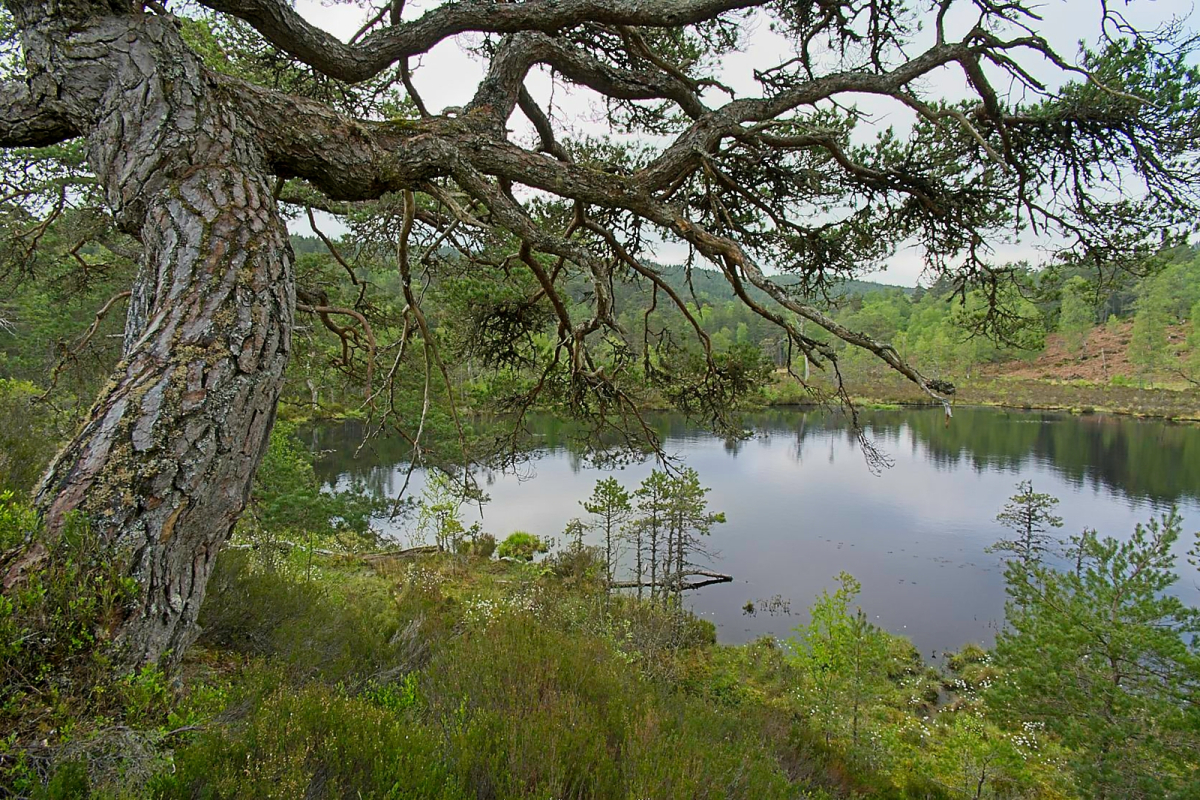
Loch Claire surrounded by bog, with an ancient Scots pine, Glen Affric

Karen watching a common redstart from the trail near Loch Claire, Glen Affric
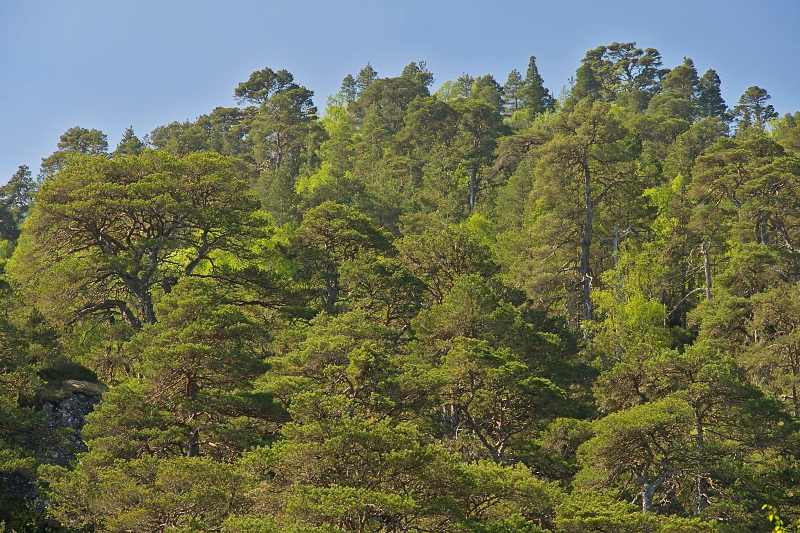
Caledonian Forest of Scots pine, birch, and others, Glen Affric
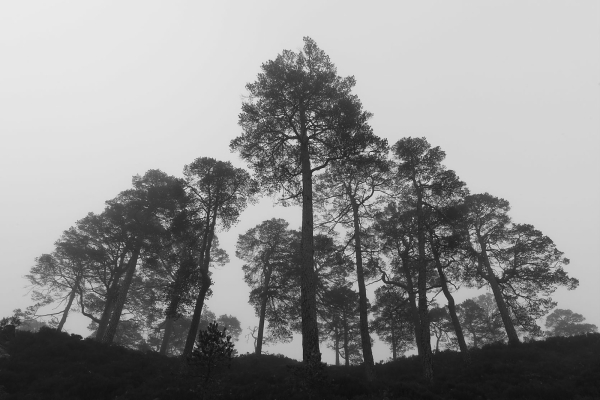
A stand of Scots pines in the fog, Glen Affric.
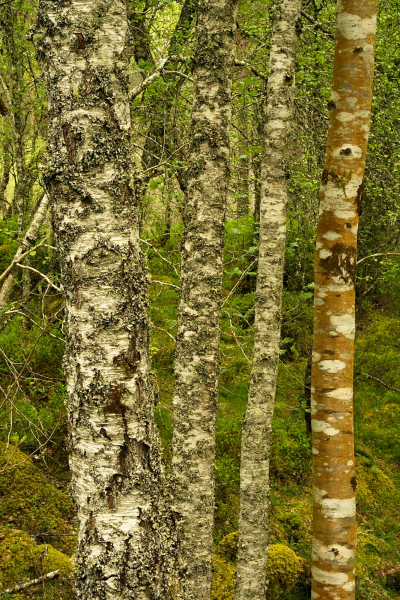
Downy birch trunks, Glen Affric
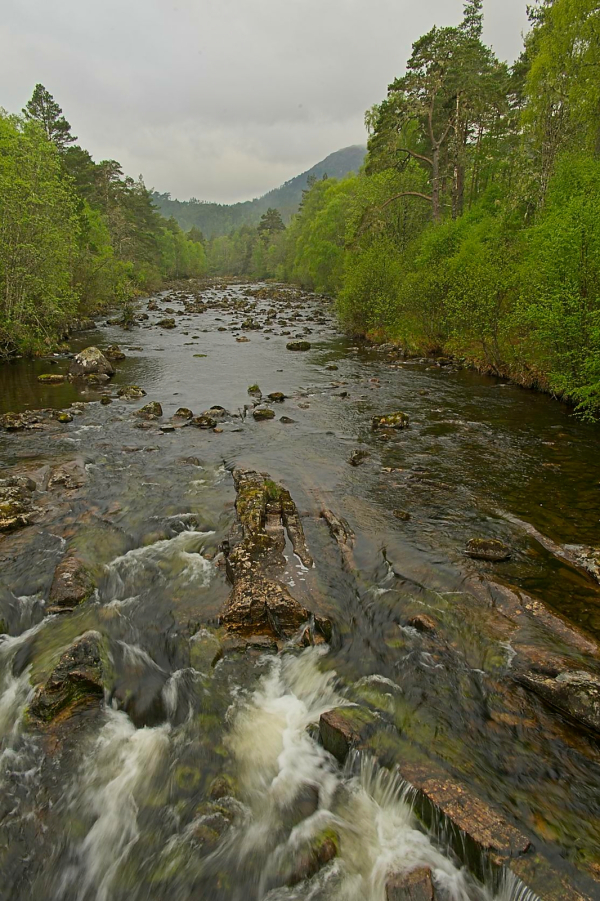
River Affric below Loch Affric.
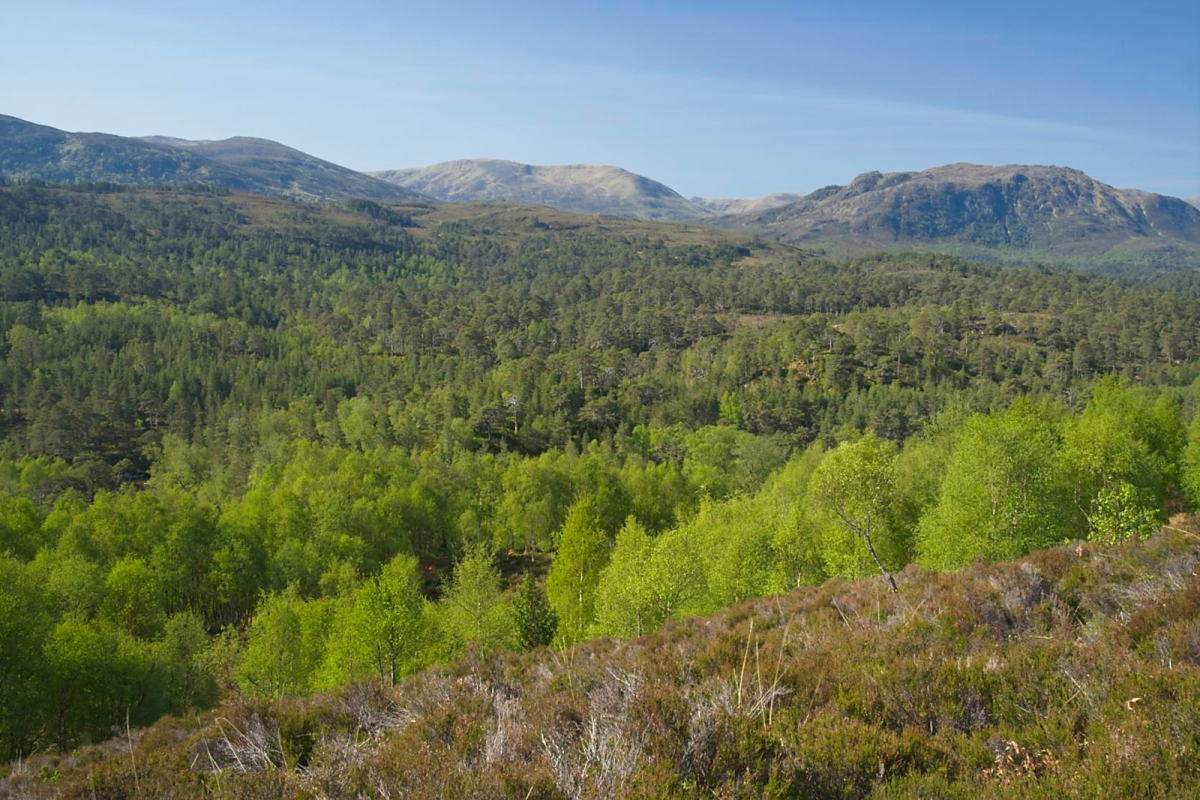
Caledonian Forest overlook, Glen Affric
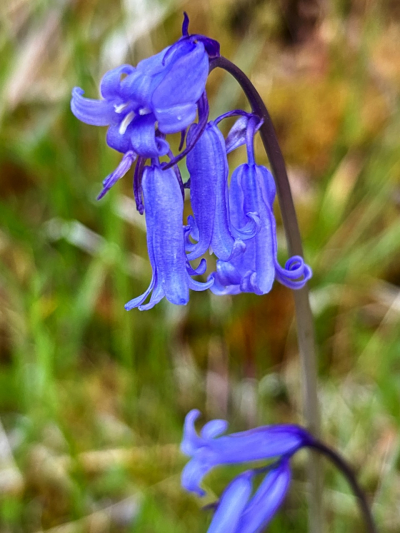
Bluebells near Dog Falls, Glen Affric
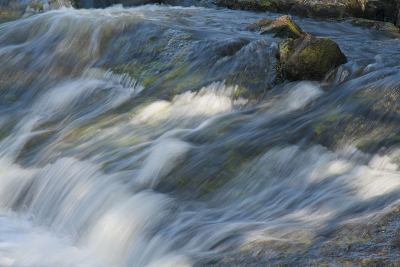
Cascade on River Affric, where we watched a white-throated dipper, Glen Affric.
After another morning of birding and walking along the River Affric, we drove back around Loch Ness and into the big city of Inverness, Scotland. A walk around downtown and a pint of Wildcat red ale at the Castle Tavern seemed appropriate before our long travel day. Next morning we boarded the train before breakfast for a relaxing 4-hour journey north along the east coast of Scotland then inland through Flow Country to Thurso, the surfing capital of Scotland. No time for the beach though as we had to catch a taxi to Scrabster then board the modern NorthLink ferry to Stromness. The Orkney Islands include 70 islands and islets, and the largest is called Mainland. Our friend Gavin, founding member 001 of the Cloud Appreciation Society (CAS), and Rebecca, the local coordinator for our group, greeted us at the terminal for a short walk to the Ferry Inn, our base for the next 5 days. Stromness gets about 260 days of rain, and 3 feet of rain per year, but we had warm, dry and (sadly) mostly cloudless days in mid-May.

Panoramic view of Stromness from Brinkie’s Brae
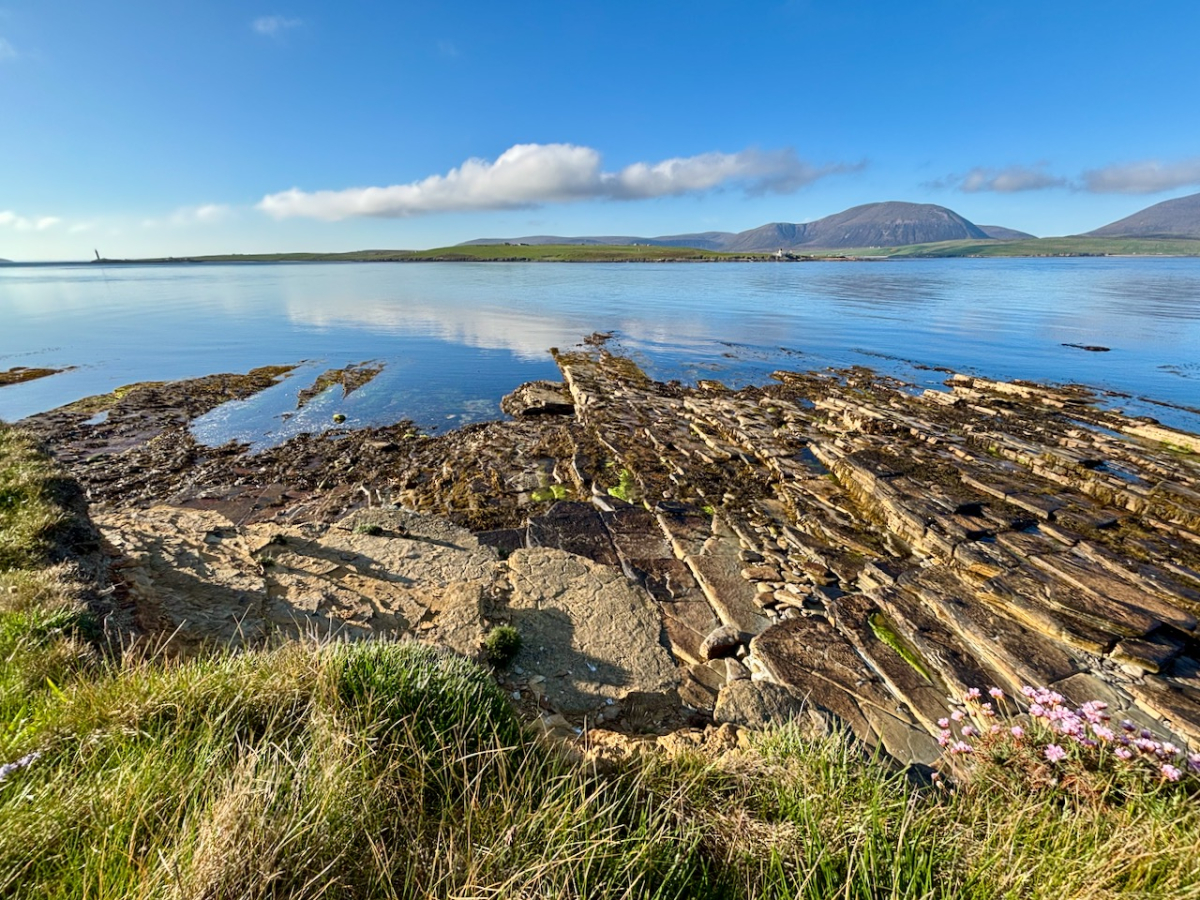
Sedimentary seashore view of Hoy Island across Hoy Sound from Stromness, Mainland.
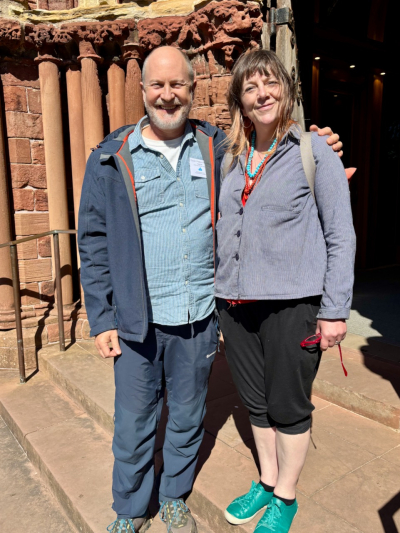
Gavin Pretor-Pinney and Rebecca Marr outside the Kirkwall Cathedral (built of Old Red Sandstone).
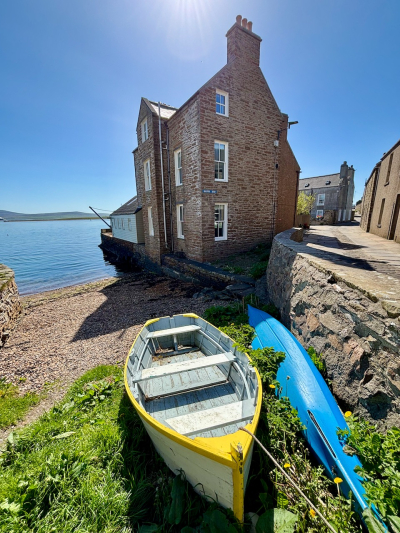
Waterfront home of local stone on a rare, calm and sunny day, Stromness.
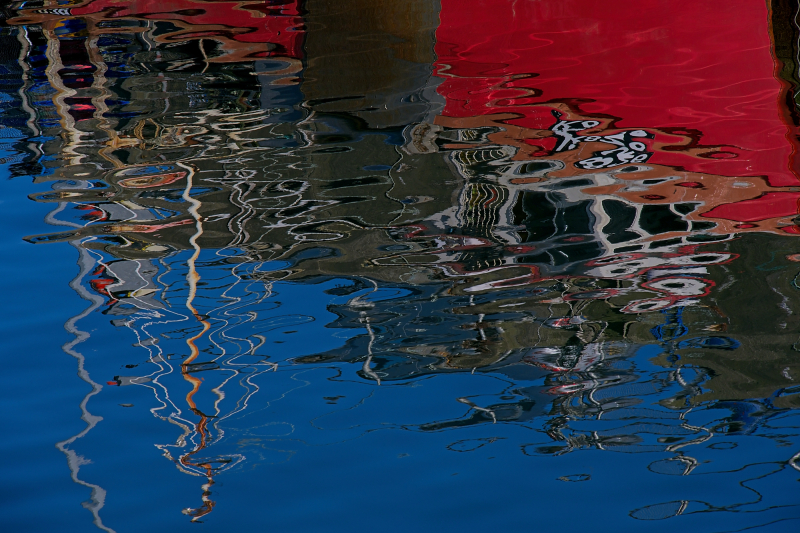
Stromness Harbor reflections
Stromness is an enchanting port town with a harbor once used by Vikings and whalers. It was also the main base for the Hudson’s Bay Company to launch for North America during the 18th century fur trade. The Stromness Museum is packed with local natural history collections, artifacts from neolithic residents, maritime exhibits, and recent history of renewable energy projects. The photogenic highlights of our CAS gathering included visits to St. Magnus Cathedral in Kirkwall, the 5000 year-old Ring of Brodgar, and Skara Brae, the neolithic fishing and farming village discovered in 1850 when a severe storm eroded the dune knoll that entombed the site.
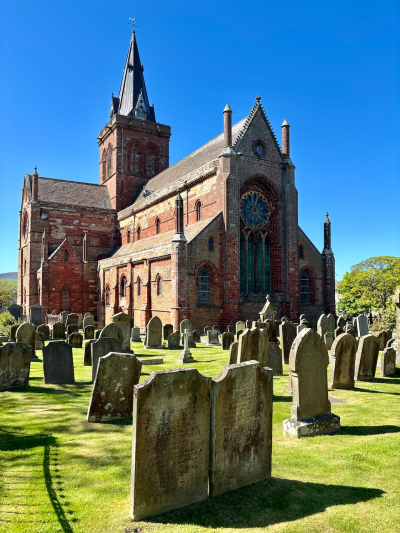
St. Magnus Cathedral, started in 1137 by the Viking, Earl Rognvald, in honor of his martyred uncle, St. Magnus.

St. Magnus Cathedral was added to for 300 years, but stained glass windows were added about 100 years ago.

Ring of Brodgar, a henge where 27 of 60 original stones remain standing in a perfect circle over 100m in diamater
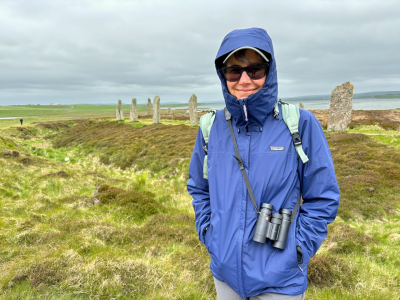
Karen at Ring of Brodgar on a cold, windy day beneath a layer of stratocumulus, the most common cloud type worldwide.
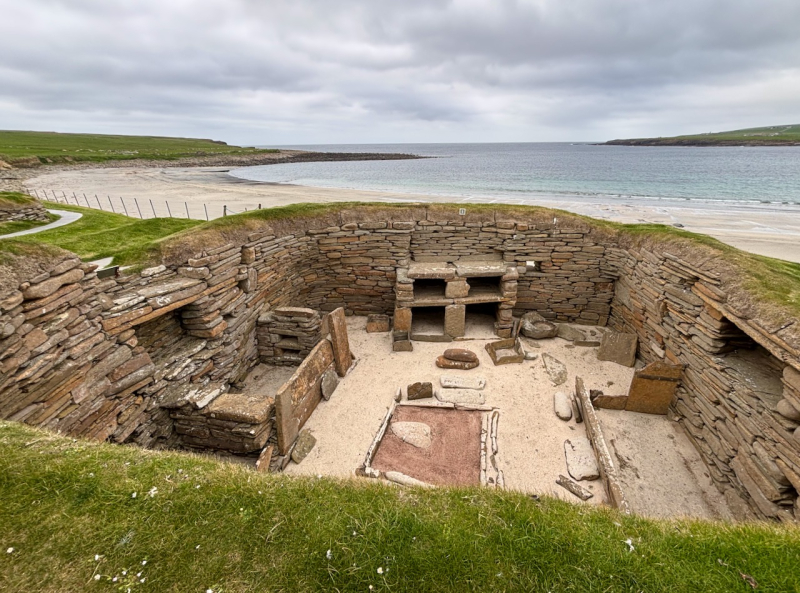
Skara Brae ruins of stone house built over 5000 years ago and inhabited for about 1000 years.
After our friendly, international CAS group bid farewell to one another, we went to Kirkwall for a tour of Highland Park Distillery then to a personal birding and botanizing tour with Orkney naturalist, Tim Dean. He showed us orchids, the endemic Scottish primrose (Primula scotica), and many flowering coastal perennials that grew in the open swards of maritime, clifftop habitats. We also saw 27 bird species this day (many of which were new to us), including familiar ducks and nesting seabirds, such as parasitic jaeger, great skua, razorbills, and a few Atlantic puffins. The sea cliffs at Marwick Head were coated with kittiwakes, guillemots, razorbills, and a few gannets. This beautiful, late afternoon and evening outing was the perfect finale to a wonderful time in northern Scotland. Next stop, Newcastle, England!
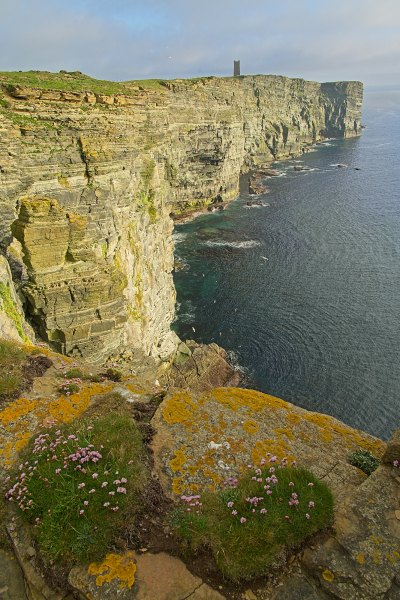
Sea cliffs of Marwick Head with Kitchener Memorial in background, west coast of Mainland, Orkney Islands.
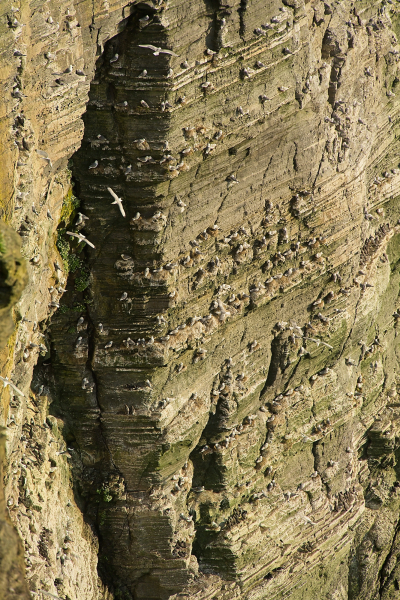
Nesting black-legged kittiwakes, guillemots, and razorbills at Marwick Head RSPB Reserve.
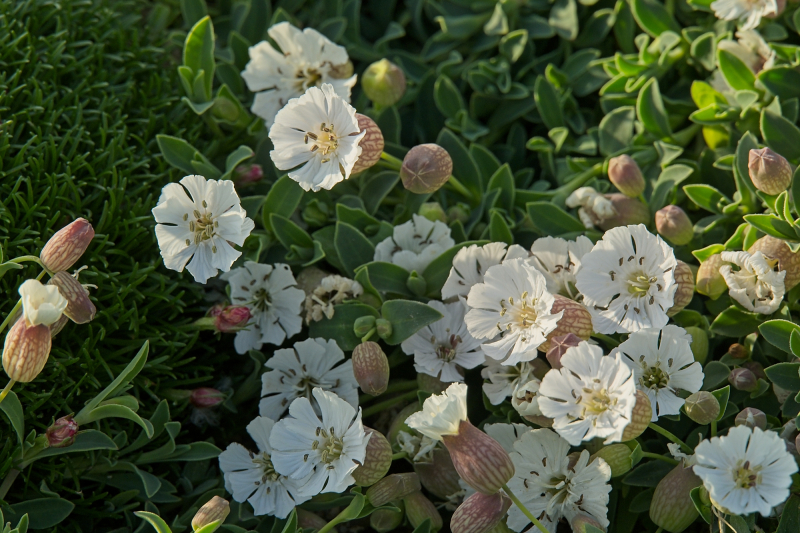
Sea campion, Silene uniflora, Marwick Head.
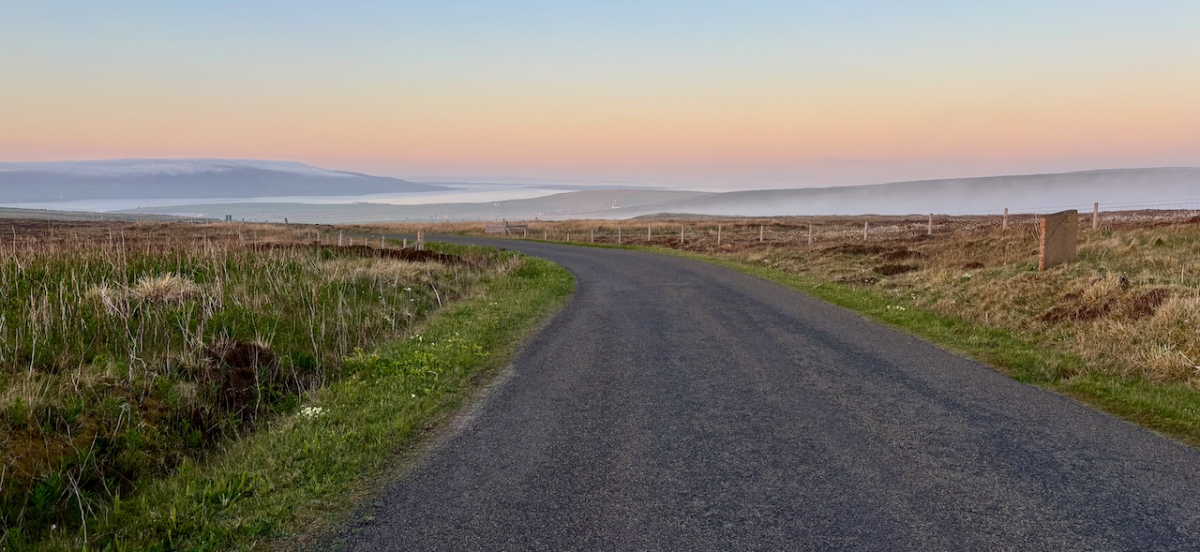
View NNW toward Rousay across Eynhallow Sound, Orkney Islands, 9:30pm

